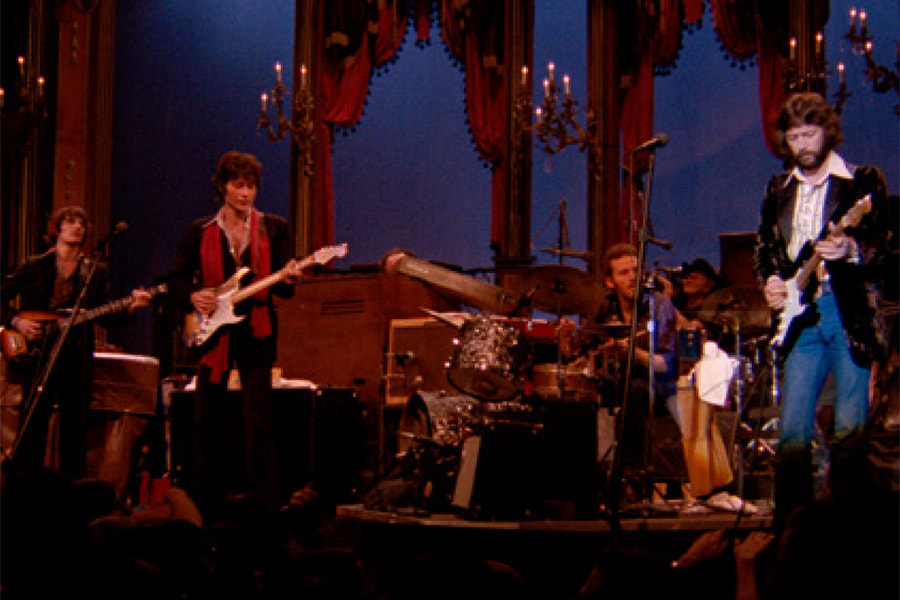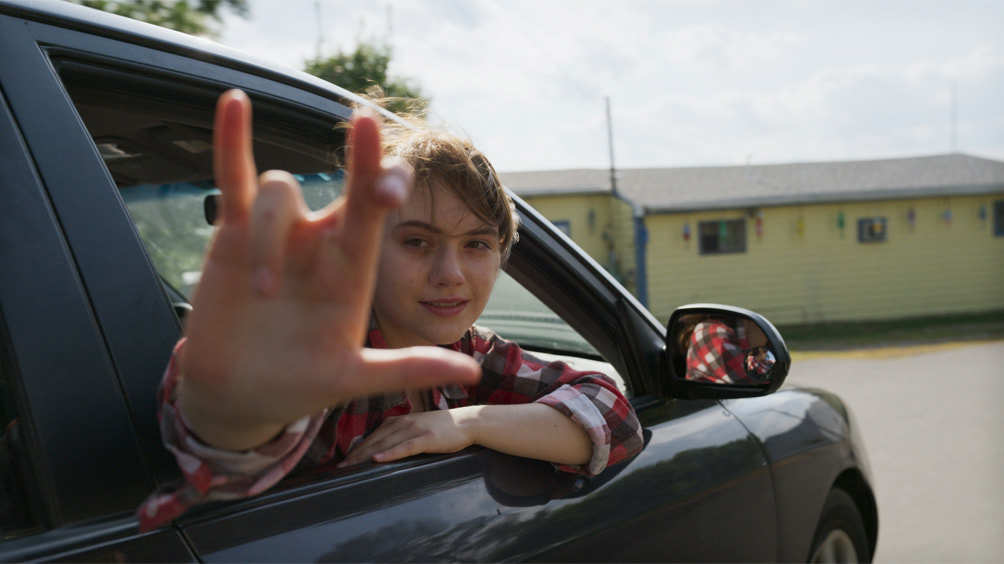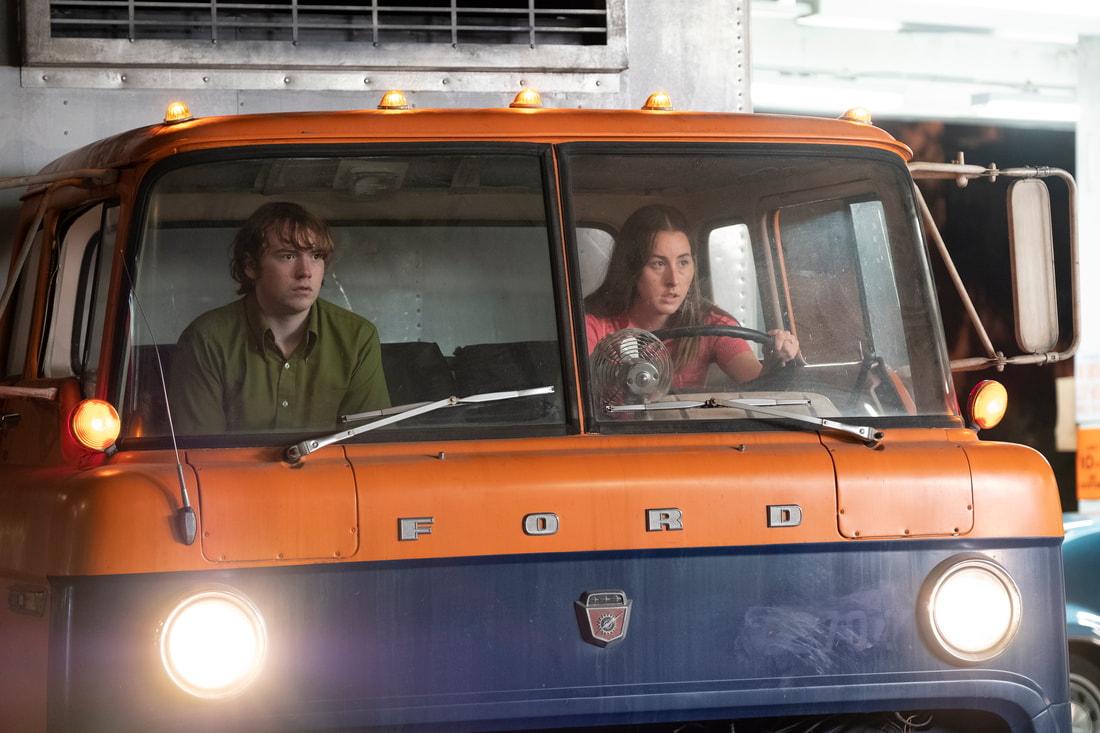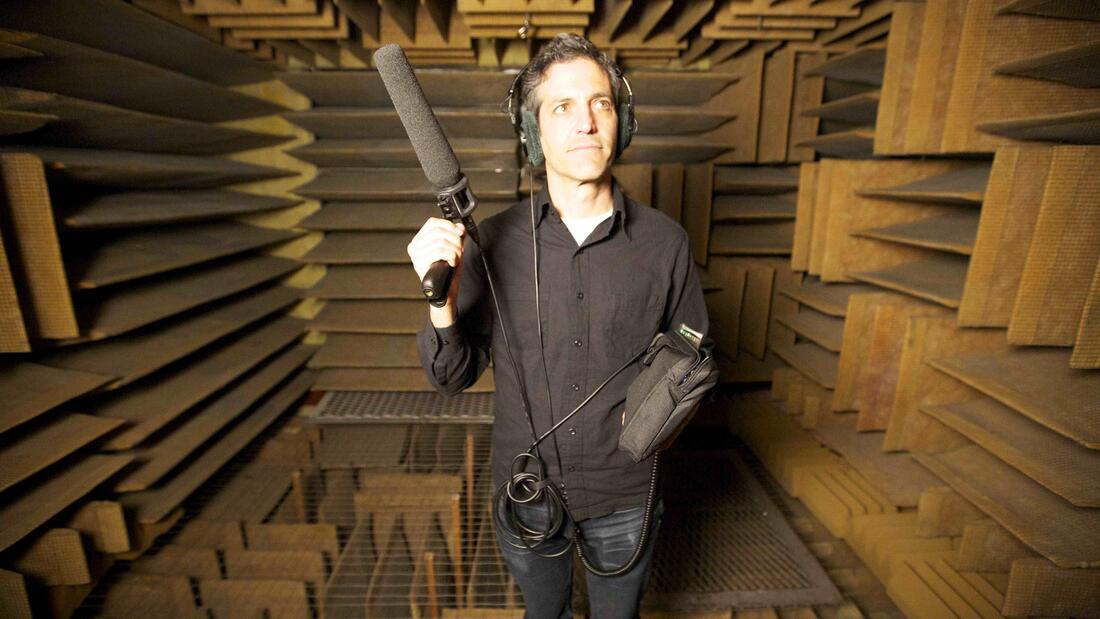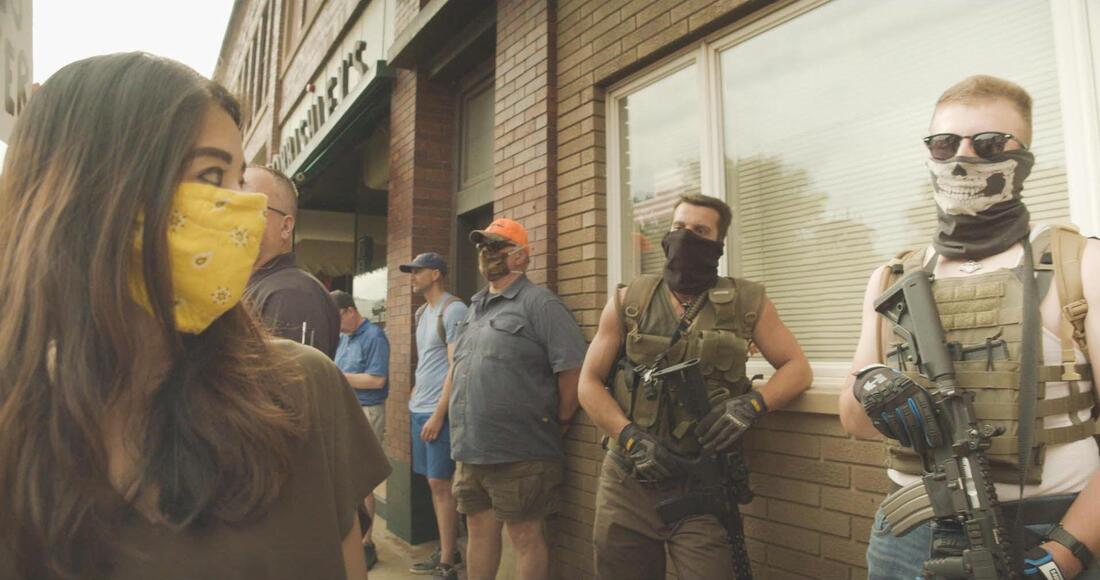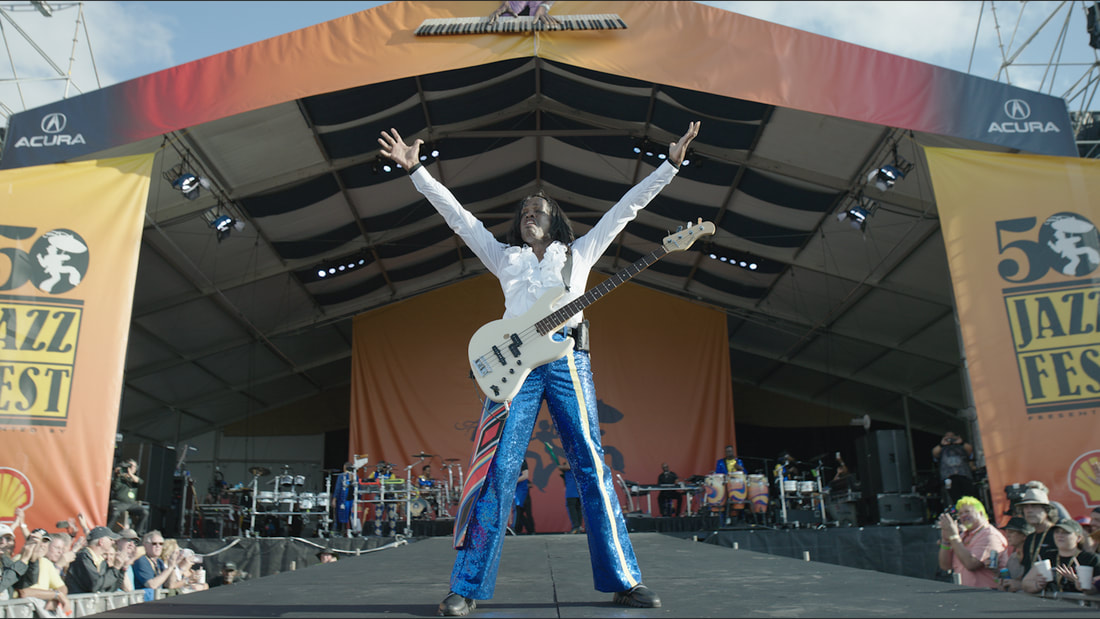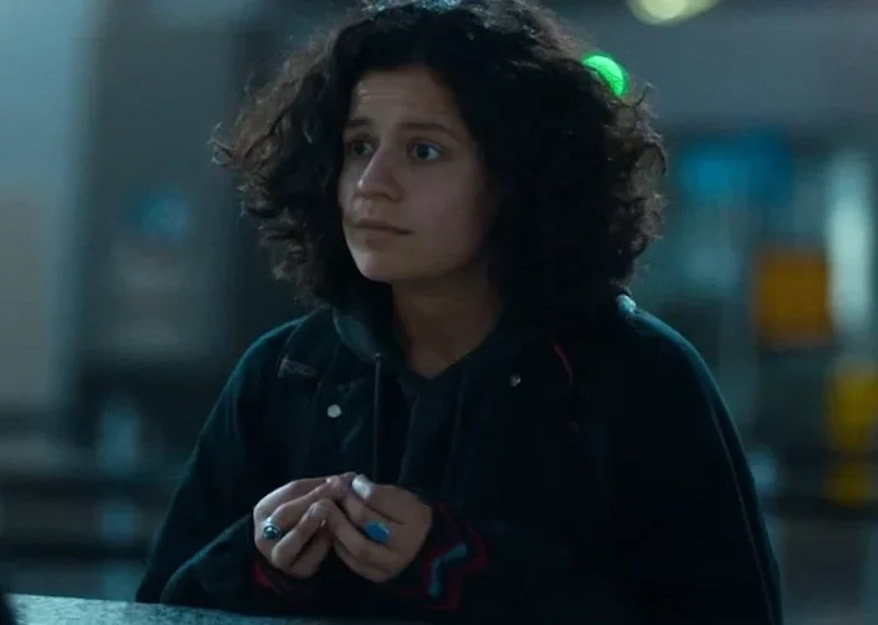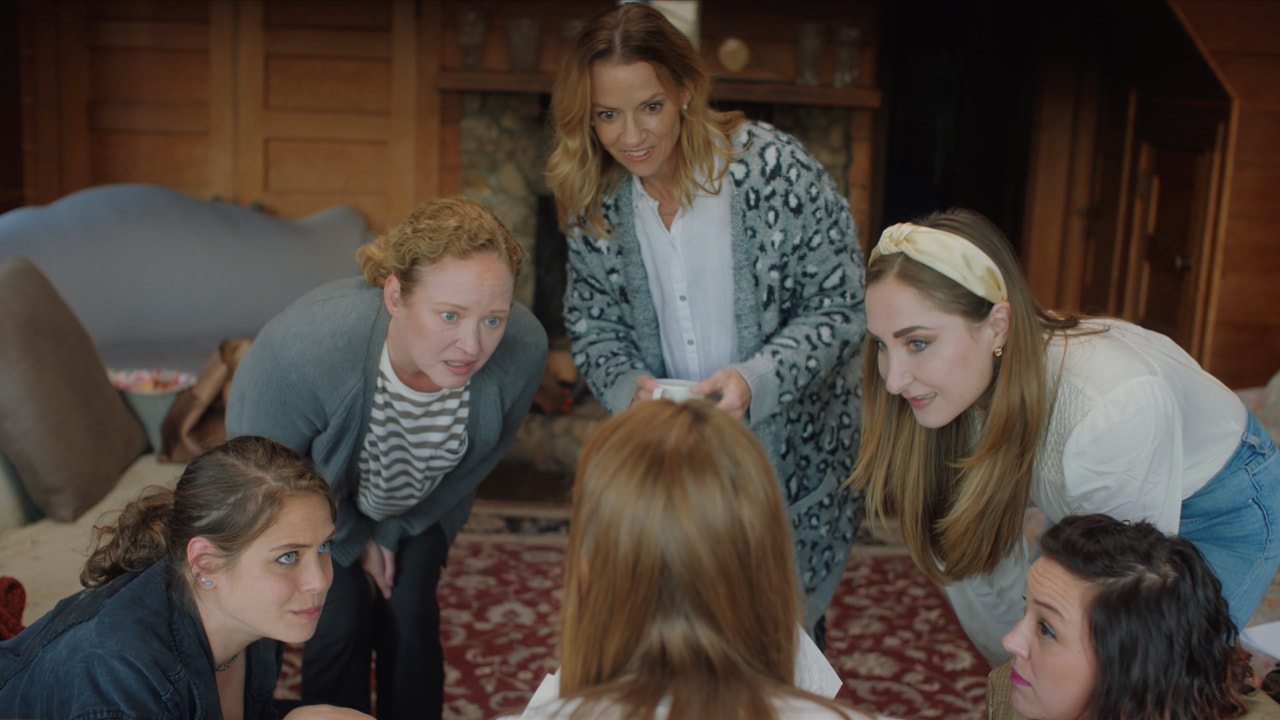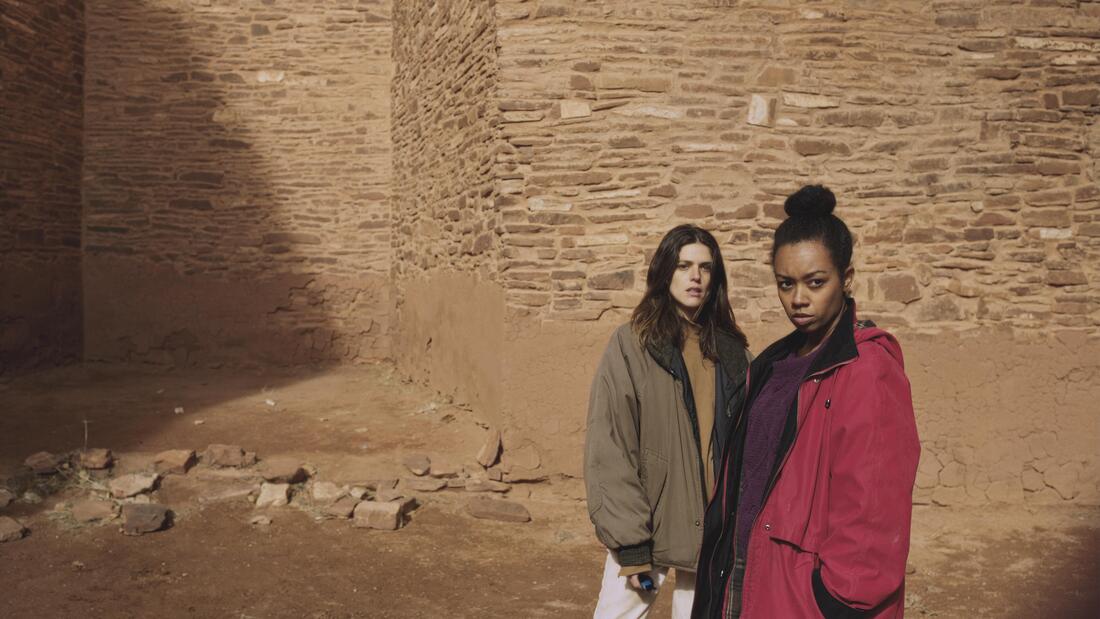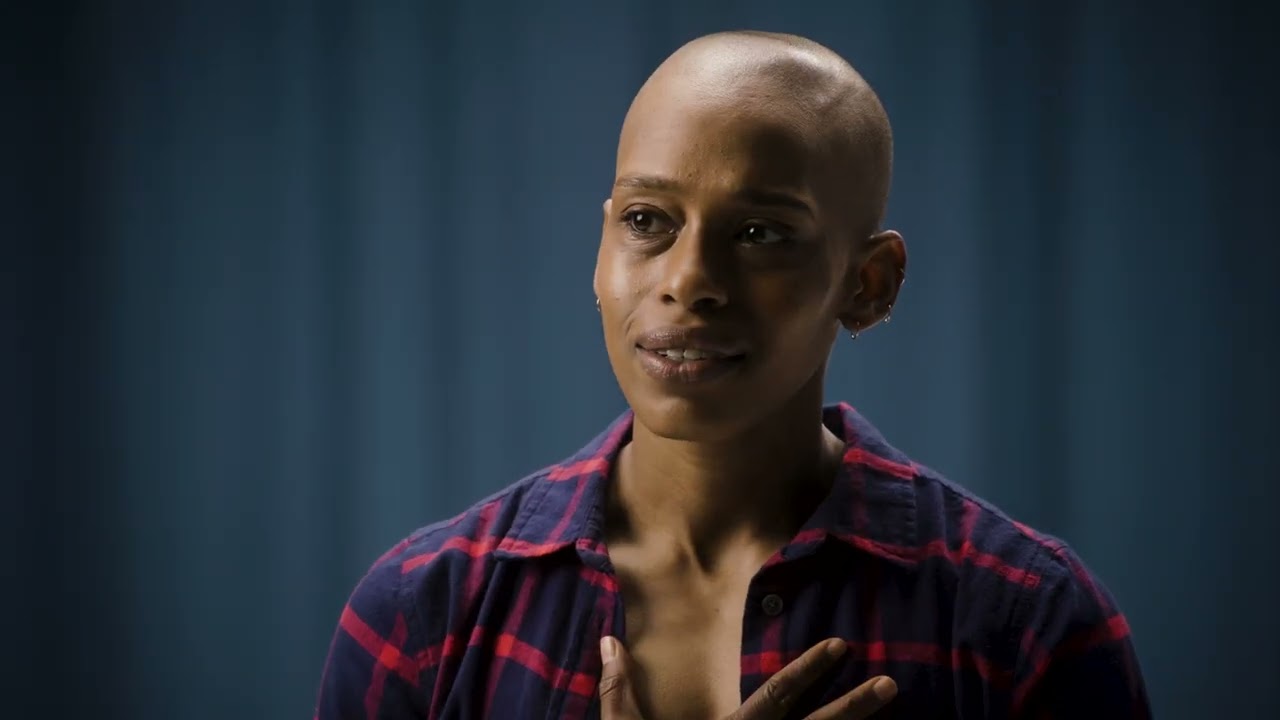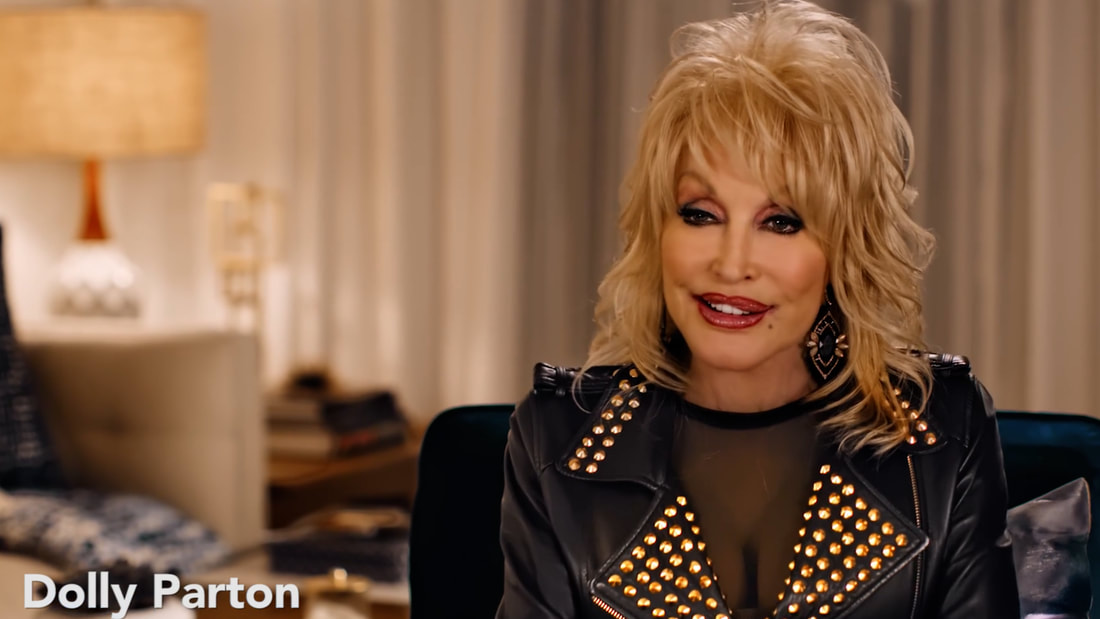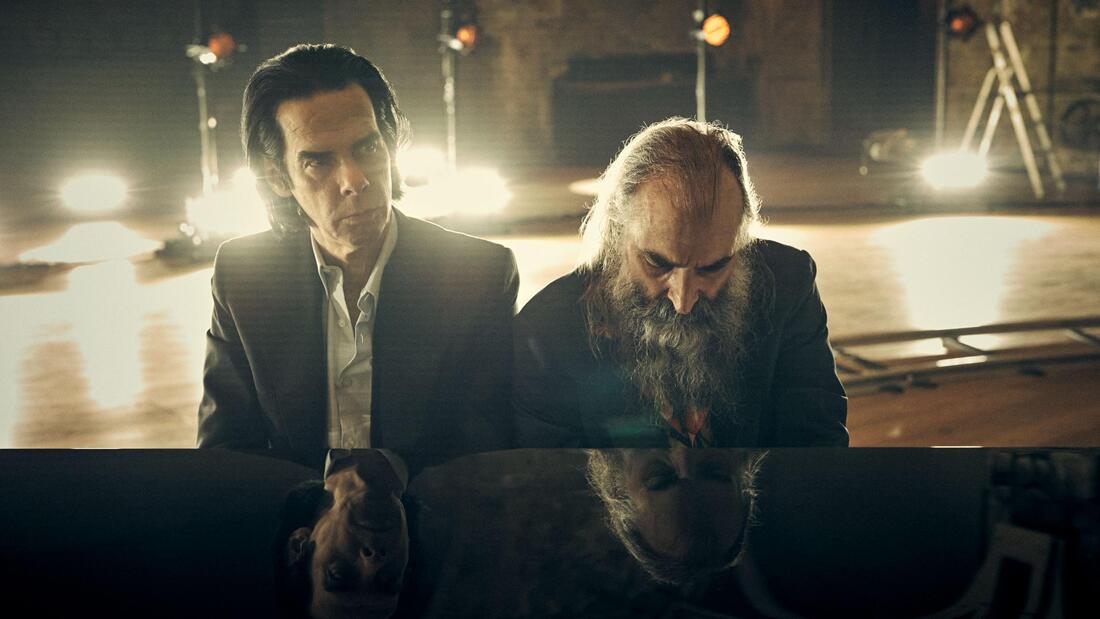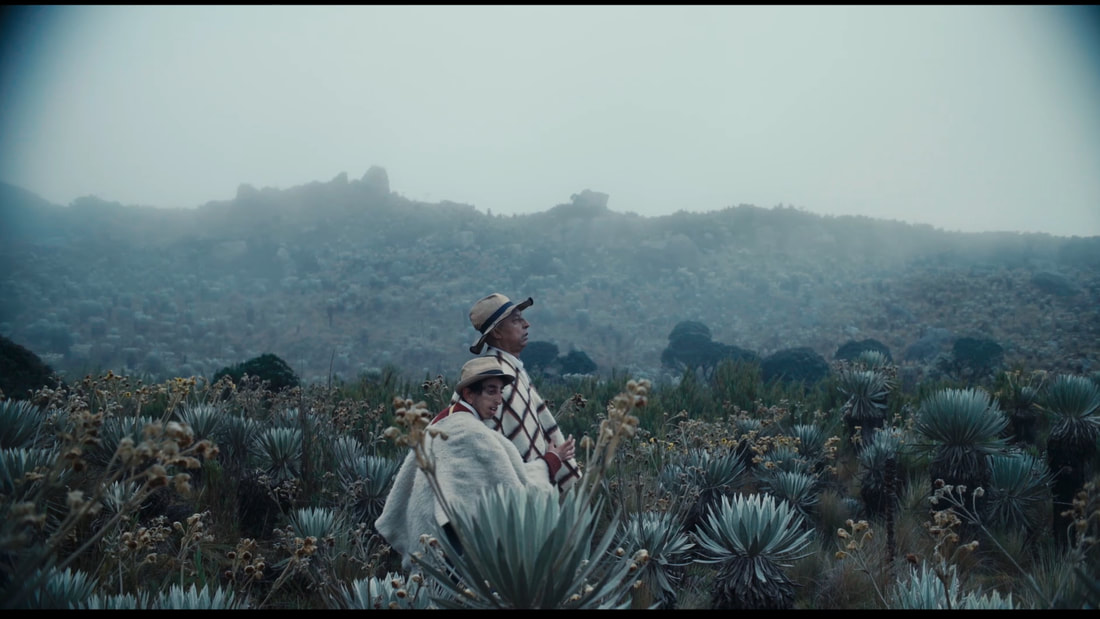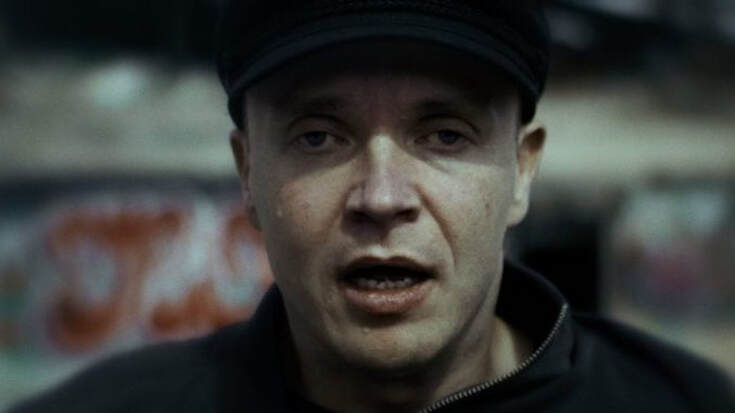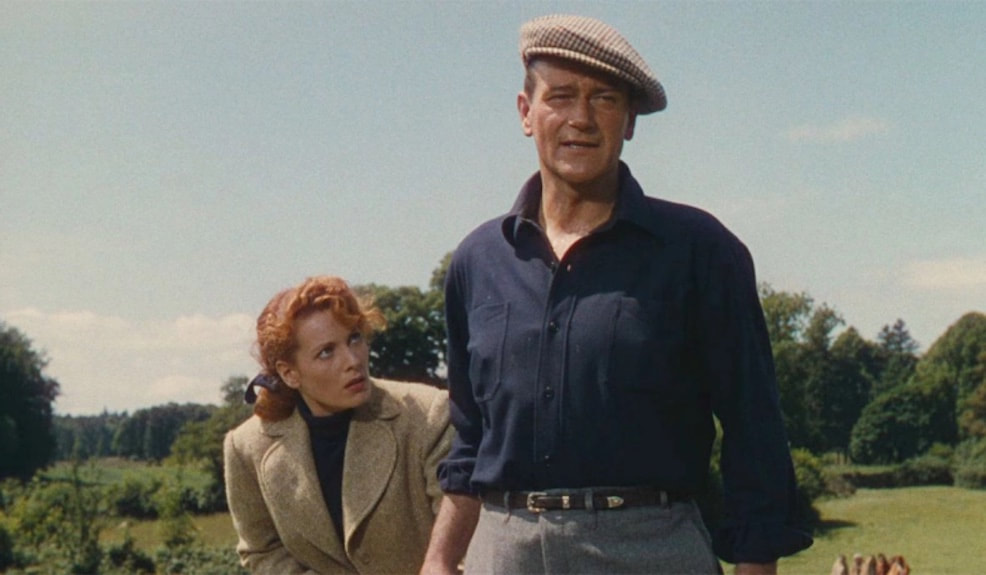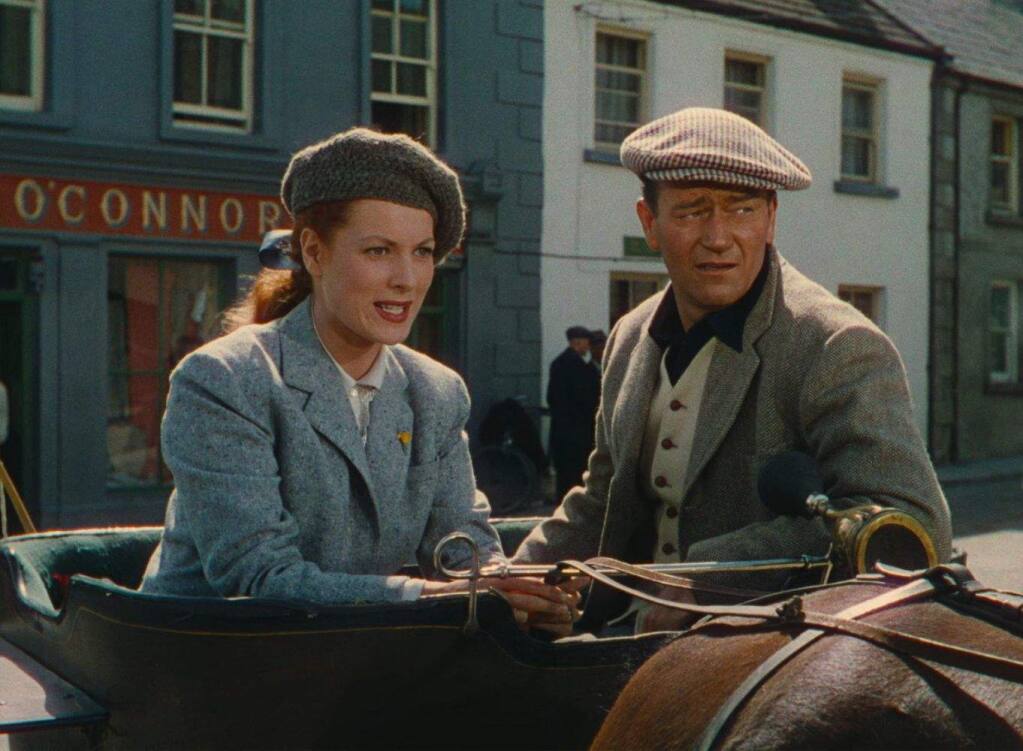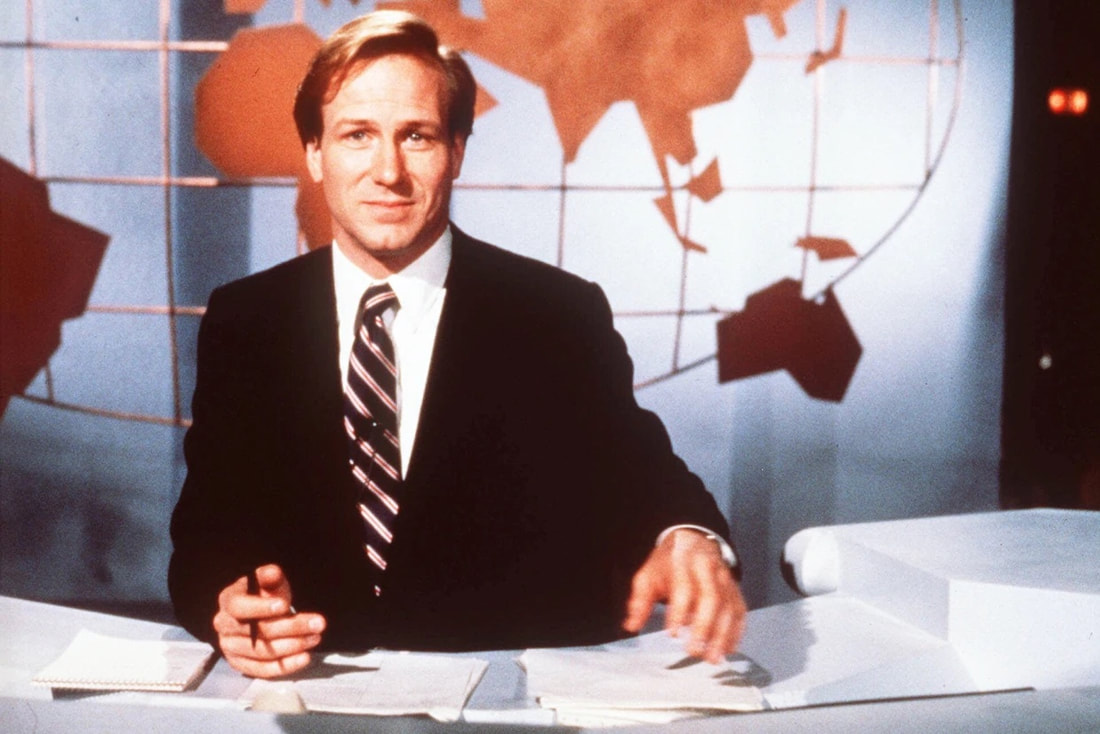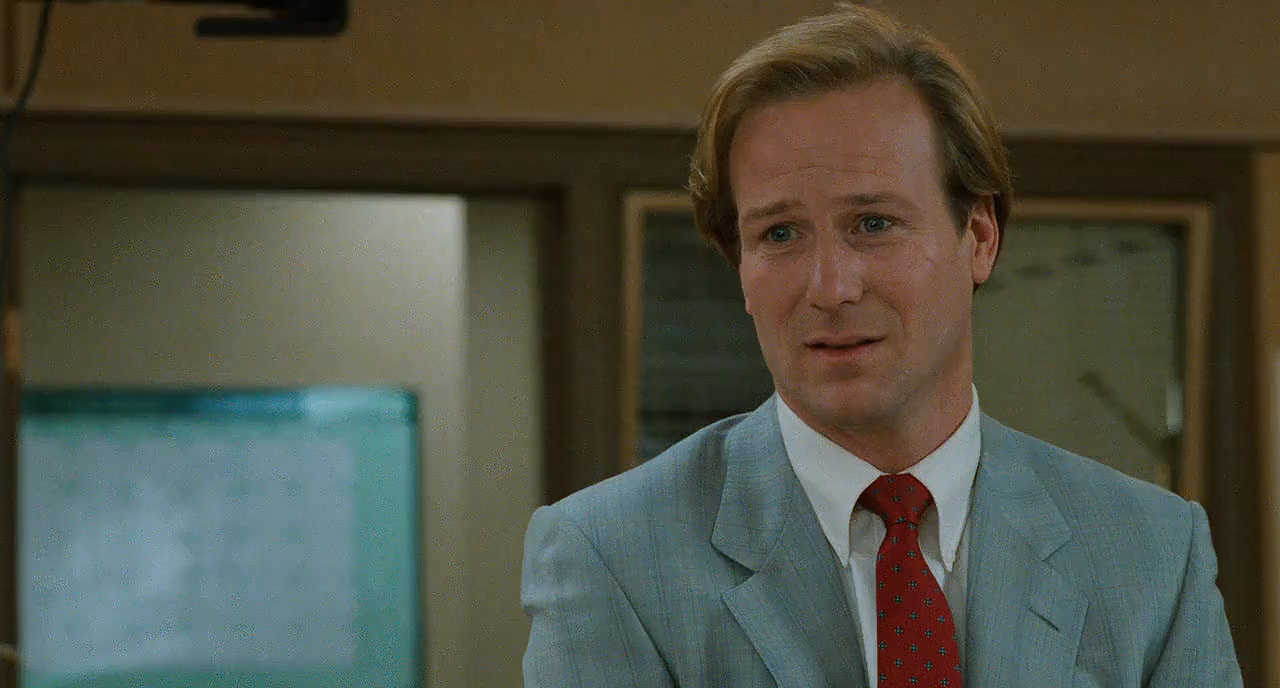|
By Sean Boelman
When looking at any list of the greatest music documentaries of all time, Martin Scorsese’s The Last Waltz would consistently rank near the top, so it’s surprising that it took this long for the film to earn a spot in the Criterion Collection. A wonderful restoration of a brilliant movie, this is a must-add to any cinephile’s physical media collection.
The film documents the final concert of the music group The Band at the Winterland Ballroom in San Francisco on Thanksgiving 1976. It’s one of the most iconic moments in rock music history, and we as music fans are lucky that this has been captured on film to be experienced by generations to come, and by someone as talented as Scorsese. This Scorsese fella sure knows how to do music documentaries, having worked as an assistant editor on what is arguably the greatest movie of the genre, Michael Wadleigh’s Woodstock. And the ability that film had to transport the audience back to a particular moment in American music history is not lost here. The movie wonderfully captures the magic of not only this concert, but the music of The Band as a whole. The Band blends so many musical genres in their work, and Scorsese manages to show the different elements that went into the creation of their signature sound without overtly explaining it. It’s a dream for fans of a good music doc.
Obviously, the concert is captured wonderfully in the film. Scorsese uses a shooting style that feels extraordinarily intimate. It’s not like we are watching a camera point at the stage, the movie aims to make us feel like we are a part of this experience and understand what fans were feeling if they were watching this concert live, and it works extraordinarily well.
Scorsese also weaves in backstage interviews with The Band in between the bits of their performance footage. But unlike a lot of other music documentaries, this does not feel like a crutch. Instead, it feels like a natural extension of what we are seeing — a way to get to know The Band more intimately. Admittedly, the bonus content on this Criterion spine is a bit underwhelming, much of it carried over from previous special editions, like a 2002 making-of documentary and two audio commentaries. Still, the restoration (supervised by Robbie Robertson) is so extraordinary that it’s more than worth the upgrade. If you haven’t yet seen The Last Waltz, now is the time. It is truly a seminal music documentary, and this new Criterion Collection 4K transfer is one that any collector will want to have on their shelf. The Criterion Collection edition of The Last Waltz releases on March 29.
0 Comments
By Sean Boelman
Every year around the time of the Academy Awards, the major contenders end up getting more significant theatrical play because of the increased interest. However, recent years have seen films get nominated that weren’t intended to get theatrical play in the first place. Oscar week marathons and other extended play is a great chance for people to catch up on the nominated films they haven’t seen or revisit those they didn’t get to see in theaters.
Last year, for the 93rd Academy Awards, was the first year that all of the nominees had been available to screen in theaters across the country since the 90th edition (since Netflix would get their first Best Picture nomination in the 2018-19 season with Roma). However, the pandemic showed the need there was for theaters to adapt and be flexible with the changing distribution ecosystem, and the theater chain squeaked out a deal with Netflix in November 2020. This is a nice return to what makes the Oscars what they are — a celebration of the best movies to grace the silver screen. But the reality of the matter is that people aren’t consuming media the same way they used to. Theatrical is still alive and well, yes, but with more options than ever before to watch from home, and those options being as high quality as they are, it is nice to see those being recognized as well. In a move that split cinephiles everywhere, the entire Warner Bros. slate for the year of 2021 streamed on HBO Max for 30 days on the same day it opened in theaters. Under the old eligibility guidelines, Dune and King Richard would have been disqualified, but the Academy’s willingness to adapt has allowed these films to be recognized. WB even emphasized the theatrical experience for Dune, running it several weeks in PLF screens and holding numerous in-person FYC events for voters in major markets. It’s a gorgeous film that demanded to be seen on the biggest screen possible. Interestingly enough, streaming service Netflix had more of a commitment to theatrical exhibition than the legacy studio WB. Their Best Picture nominees Don’t Look Up and Power of the Dog each had theatrical exclusivity periods of a few weeks, and for the most part, even only screened for press theatrically only. Don’t Look Up blew up on Netflix, but it’s the type of film where the laughter plays well with a crowd. Power of the Dog is the only film that maybe benefits from a lack of theatrical play because, despite Ari Wegner’s cinematography being a sight to behold, its glacial pacing is hard to sit through in a theater.
Some studios still committed to a limited theatrical window with their releases. Focus’s Belfast played exclusively in theaters for 19 days before being available to rent at home for $19.99 in the PVOD model. While this is the type of prestige pic that likely would have gotten a theatrical run anyway, it was still nice to be able to see this with a full crowd of people laughing and crying alongside the film.
Disney-owned 20th Century Studios took it a step further with 45-day theatrical exclusivity periods for Nightmare Alley and West Side Story before they hit HBO Max and studio-owned services (Hulu and Disney+, respectively). Both are films that feel like they came from a bygone era, one a moody noir drama, and the other a big-screen musical. Both benefit from the immersion of being able to see them with an extraordinary sound system and picture quality. The two films that had a full theatrical run were MGM’s Licorice Pizza and Janus Films’s Drive My Car. Licorice Pizza even had a full-month run exclusively in 70mm film before even opening in theaters nationwide. It felt like a prestigious theatrical event. Drive My Car had a specialty run, and part of what makes the Oscars so special is that a nomination can boost a film’s profile significantly. Now, the film is getting play in major multiplexes across the country. One of the most surprising things about this year’s Best Picture race is that one of the frontrunners had the least theatrical play. CODA is a true crowd-pleaser in every sense, and it hits so much harder emotionally when you see it with a crowd of people who are eating it up. It’s unfortunate that only a select few people have gotten the chance to see this on the big screen, but those few who did had a truly lovely experience. It’s a great feeling to be able to see all of the Best Picture nominees on the big screen again. With so many of these films being available for at-home viewing, it’s easy to forget the magic that these films can have on the big screen.
By Sean Boelman
Returning in-person to Austin better than ever, the SXSW Film Festival is again bringing cinephiles a showcase of some of the most exciting and subversive films that the year has to offer. For those who have been missing the feeling of community for the past two years, this will be a happy reunion, but for those who aren’t able to make it out to the live event will still have the opportunity to participate via some online offerings.
We at disappointment media are covering the SXSW Film Festival again from home, and we will be reporting to you on what we have had the chance to see in the lineup. Below you will find some of our quick thoughts on some of what we have seen, and we will be updating this article throughout the fest, so be sure to check back in! Split at the Root
Linda Goldstein Knowlton’s documentary Split at the Root explores a very important issue: immigrant families being separated under the Zero Tolerance Policy. And while the film explores these issues in a way that highlights the urgency of the situation, there are some issues with its presentation. Although it is understandable why the filmmakers wanted to focus on the people bringing about change on this front, it comes dangerously close to coming across as white saviorism.
32 Sounds
Documentarian Sam Green’s new film 32 Sounds debuted at Sundance earlier this year and is now making its way to SXSW. However, this was not envisioned as merely a film — there is also an in-person experience that augments the film with live performance elements. It’s unfortunate that the COVID-19 pandemic has prevented most audiences from experiencing the latter, but Green’s exploration of sound is still fascinating and something you have to behold. It’s definitely a tad on the pretentious side, but it’s observations are strong enough to justify it.
Bad Axe
The SXSW Film Festival Documentary Feature Competition often features a film that will be very important in the long run, and David Siev’s Bad Axe is that film this year. Exploring a community in rural Michigan, the film is at once an exploration of the COVID-19 pandemic, generational trauma, and the Black Lives Matter movement. It’s a lot to juggle, and at times, first-time director Siev struggles to tell all of these stories, but the result is mostly affecting.
We Feed People
For some reason, filmmaker Ron Howard’s documentaries tend to be much more consistent in quality than his narrative films. We Feed People, his portrait of the activism of celebrity chef José Andrés, is yet another good documentary from him. Those hoping for this to be a standard cooking documentary are going to be disappointed, because there isn’t much of a focus on the food itself, but it is a moving portrait of the difference that people can make if they dedicate themselves to change.
Jazz Fest: A New Orleans Story
Despite what the title may imply, Jazz Fest: A New Orleans Story isn’t really about jazz… nor does it go too heavy on the Big Easy. Just as the eponymous music festival has evolved over the years to become something more mainstream from how it started, this documentary appeals to the masses. Yes, it’s a good film in many ways, with great music and a celebration of the culture that led to Jazz Fest exploding as it did. Still, the film doesn’t escape the feeling of being a glorified promotional video to attract new attendees to the festival.
Hypochondriac
Addison Heimann’s Hypochondriac is the type of movie where you can admire what it was obviously trying to be, even if it doesn’t always work for what it is. The film deserves some points for being an unabashedly gay genre picture, something which there isn’t enough of, even these days, but the execution is messy. The first half of the film and the second half of the film don’t really mesh together, as when the film goes from being slightly tongue-in-cheek in the beginning to being more of a straightforward horror picture for the remainder of the runtime, it loses most of its steam.
Millie Lies Low
Michelle Savill’s Millie Lies Low is the rare film that manages to take two very different tones and balance them extraordinarily well. It works as both an awkward comedy and an uncomfortable race-against-the-clock thriller. Ana Scotney’s performance as the titular character is extremely strong, giving the film a majority of its emotional resonance. For those who experience any form of anxiety themselves, Millie’s struggle is not only going to be extremely sympathetic, but entirely contagious.
Soft & Quiet
When Jason Blum boards something that isn’t outright horror, you know that it’s something to be excited about. And so when he was announced to be joining as a producer on the real-time thriller Soft & Quiet shortly before the beginning of the festival, it immediately became one of the most intriguing films in the lineup. Lo and behold, it’s an absolutely riveting watch, with a depiction of white supremacy that is disgusting in all the right ways. It’s the type of film that will stick with you long after the credits roll.
Jethica
Pete Ohs’s Jethica is a true rarity in the major festivals these days — a truly independent film. You would expect a film like this with a budget of about $100,000 to pop up at something like Slamdance or perhaps a genre festival, but the fact that it got a major platform like SXSW is impressive in and of itself. While the film shows its budget at several points, and even occasionally looks outright cheap, there is something undeniably charming about its style that makes it a cult classic waiting to happen.
Diamond Hands: The Legend of WallStreetBets
The GameStop stock situation is without a doubt one of the most bizarre things to happen in the history of the stock market, and so it’s definitely the type of story that would make a fascinating documentary. Diamond Hands: The Legend of WallStreetBets interviews the retail investors who played an integral role in the historical surge of the company’s stock prices along with the Wall Street insiders who were caught so off-guard by this unprecedented movement. But these events also pulled back the curtain on an issue in the system that threatens our financial freedom as individuals, and this film explores that well.
The Thief Collector
In her documentary The Thief Collector, Allison Otto explores one of the most unusual mysteries that shook the art world. It’s an art heist that feels like it is pulled out of the movies because of how simply outrageous it is. And yet, the film still falls victim to the same flaw that a majority of art-centric documentaries have: the talking head interviews just aren’t that interesting. No matter how many ridiculous twists and turns the story takes, it will be hard to keep the audience interested in these people talking about art in a very dry way.
Still Working 9 to 5
Camille Hardman and Gary Lane’s documentary Still Working 9 to 5 explores both the making of the eponymous hit 1980 film and the context in which it is made. It’s a film that is sure to be of interest to cinephiles, because it tells one of the best underdog stories in the film industry, but it also explores the very real issue of gender parity. And in discussing the ways in which these issues are still prevalent over 40 years later, the film is a call to action that audiences need to see.
Deadstream
Co-writer/co-director/star Jason Winter is a lot of what makes the horror-comedy Deadstream work. As a parody of a specific type of viral video, it’s quite funny, even if its humor is derived more from basic gags than insightful satire. But it’s also just a solidly-crafted horror flick in its own right. In terms of found footage movies, it’s on the upper end, with a narrative device that makes sense and a style that isn’t overwhelming. Plus, the make-up work here is exceptional, featuring a handful of really impressive monsters.
Sissy
Acquired by Shudder shortly before the start of the festival, Hannah Barlow and Kane Senes’s Sissy is a confused film. Part social media satire and part slasher flick, the film can be divided pretty clearly into two halves, neither of which works particularly well. The film follows two childhood best friends who reunite after a decade apart, leading them to a trip together in a remote cabin where some long-dormant tensions arise again. And if the tonal issues weren’t enough, the film is sunk by the fact that the characters aren’t likable whatsoever.
This Much I Know To Be True
Filmmaker Andrew Dominik and musician Nick Cave’s previous concert film collaboration, One More Time With Feeling, was met with widespread acclaim, and their newest outing, This Much I Know To Be True, will be received with equal warmth. Poetic and beautiful, this isn’t going to be a film for audiences who can’t get behind Cave’s idiosyncratic musical style, but those who appreciate his unique brand will be absolutely enthralled. It definitely meanders a bit, but its observations are so profound that it works.
Self-Portrait
Several documentaries have used footage in a very abstract sense with little in the way of a traditional narrative, but are still compelling nevertheless. Joële Walinga’s Self-Portrait will not join those ranks, as this mosaic of surveillance camera footage taken over the past four years is not all that interesting. Supposedly offering a peek deep inside the hearts of humanity and an exploration of the things that we value, there are some thematic threads here about connection and greed, but they don’t develop into anything that is insightful beyond the level of a college-level sociology course.
Pirates
Reggie Yates’s Pirates is a charming little hangout film, although it does feel derivative of so many other films of the genre that have come before. It’s a fun time, and at less than eighty minutes, it’s hard to really hate anything about this, but it becomes clear after about twenty minutes that all it is dealing in is good vibes. The thing that makes it so watchable is the extraordinary chemistry of the main three actors: Jordan Peters, Reda Elazouar, and Elliot Edusah.
A Vanishing Fog
The Colombian film A Vanishing Fog is certainly going to be one of the more original films in this year’s film festival lineup, but it comes across as more idiosyncratic and eccentric rather than imaginative. The film is about a guardian of the mountains who spends his time caring for the ecosystem and his ailing father. It meanders quite a bit, and while there are some occasional moments that offer some genuine insight, it mostly feels like an imitation of better, more poetic Latin American filmmakers. Augusto Sandino’s visual style is impressive, but the script leaves something to be desired.
The Blind Man Who Did Not Want To See Titanic
Teemu Nikki’s The Blind Man Who Did Not Want To See Titanic is a rare film, the sorts of which are hard to find outside of the festival circuit. It follows a blind man who sets out on an impulsive quest to unite with a woman he has never met face-to-face but talks on the phone with regularly, with the hitch of him not having an aide to help him find his way. An unorthodox mix of romantic comedy and thriller, the biggest strength of this film is in how well-written and endearing the protagonist is, making this a powerful watch.
The 2022 SXSW Film Festival runs from March 11-19.
By Dan Skip Allen John Wayne (True Grit, The Searchers, Stagecoach) has got this reputation of being a man's man. He is a tough guy if you will, but he played a softer, more compassionate character in his films every once in a while. That is if you consider Sean Thornton a gentler, more compassionate man. After all, he killed a man in the ring as a boxer, which convinced him to leave America and move to a small town in Ireland called Innisfree. Now he's trying to start over fresh. Sean figures he would move back to where his family is from, and he would buy their land and live the rest of his life in peace. Except a man named Will Danaher (Victor McGlagen) is also interested in the land. Sean notices a beautiful redhead named Mary Kate (Maureen O'Hara, How Green Was My Valley, Miracle on 34th Street), who happens to be the sister of Danaher. He tries to get into a relationship with her to spite Danaher, but she's feisty and fiery as redheads tend to be. And what a beautiful relationship it turns out to be. Maureen O'Hara and John Wayne have been in a few other films besides A Quiet Man together: McLintock, Rio Grande, and Big Jake. They have very good screen chemistry from working together on all these films. Some might consider it one of the best on-screen romances ever in Hollywood. I would have to agree with this assessment. These two have a great on-screen dynamic. Another frequent collaborator of John Wayne is John Ford. These two have had a long and prosperous filmmaking relationship with one another. They did quite a few Westerns, making the duo famous in Hollywood. Their films are some of the best movies ever. A Quiet Man might be the oddest film they've done, though. It's not about tough firefighters, WWII pilots, or gunfighters shooting each other and Native Americans. It's a romantic film that hits on all the notes a great romantic film should. With the annual March holiday of St. Patrick's Day coming up, A Quiet Man is a perfect film to revisit. It's one of the greatest films focusing on Ireland. The drama between Wayne and McGlagen's characters is accurate of the time, and the romance is one of the best put to screen. This film also has more to offer than just the story and acting. It has excellent cinematography and music as well.
The cinematography by Winton C. Hoch is gorgeous for the time. The reds and blues are very bright and vibrant, and Ireland's backdrop as a whole is beautiful. The music by Victor Young, mostly bagpipes and horns, is fantastic as well. The film has so much going for it. The story by Ford and others is excellent as well. It's the kind of story many audiences can get behind. As a kid, I was in love with films about Ireland. Darby O'Gill and The Little People and A Quiet Man were my favorites because they romanticized the homeland of my ancestors. The music and drinking were right up my alley. A little too much up my alley. Still to this day, St. Patrick's is my favorite holiday. John Ford, John Wayne, and Maureen O'Hara gave me a film where I could believe in something as a child. My upbringing wasn't perfect, but films like A Quiet Man are something I can go back to time and again and remember what kind of life I wished I could have. A Quiet Man is turning seventy years old this week. If there ever was a film to see at this time of year, it's this one. The beautiful romance, what there is of it, and the redemption story of Wayne's character is all worth watching the film. The music, whether it is an Irish lyric or a slow piano solo and pun intended music to my ear. The look of the film is stunning. The performances by all and direction are fantastic. This film is just a delight no matter how you look at it. What other film would be better suited to watch this St. Patrick's Day holiday than this one? It's one of the best from this trio who have so much familiarity with one another. By Dan Skip Allen Broadcast News isn't the first film or the last that deals with the nightly news, whether local news or national news. Aaron Sorkin did a great job with The Newsroom for two seasons on HBO, Apple TV+ has The Morning Show, which is a big hit, and Network won four Academy Awards for Peter Finch (posthumously), Faye Dunaway, and two others. Broadcast News is a more in-depth film about the interworking of a news network and news broadcasting. Jane Craig (Holly Hunter) is a high-strung new producer in Washington DC. She has the drive to succeed in her field but lets romance get in the way of her career. A fresh new anchorman, Tom Grunick (William Hurt), is hired, and she falls madly in love with him even though he's not good for her. Another co-worker, Aaron Altman (Albert Brooks), is unbeknownst to her, infatuated with her. She has to balance her love life and her career. William Hurt is a very prolific actor, even winning an Academy Award for Best Actor in a Leading Role for his role as Luis Molina for Kiss of the Spider Woman in 1986. He played General "Thunderbolt" Ross for many years in the Marvel Cinematic Universe, the father of Betty Ross. He starred opposite Marlee Matlin in Children of a Lesser God and the erotic thriller Body Heat. Tom Grunick in Broadcast News might be his most complex role ever. He is trying to woo Jane while also building his career as a news anchor. His character has multiple layers to him. This is what made Hurt such a prolific actor for forty years: his ability to create layered and complex characters studies with each performance Holly Hunter won an Academy Award for the Jane Campion classic The Piano in 1993. She has played everything from an animated Elastigirl in The Incredibles to a sexually active policewoman in Raising Arizona. She is an outstanding actress who brings power and reverence to her roles. She has been in many fantastic films and tv shows, but her feisty, know-it-all character in this film might be her best. She has to control everything, even going as far as telling the cab drivers how to get from place to place while riding with them. She even has to manipulate her love life to the tiniest detail.
Broadcast News is an in-depth look at the television news industry and how this industry can be very good at times and toxic at others. The cutthroat nature of it is very fascinating. James L. Brooks tries to balance the hard-nosed news angle with a romantic comedy. It works perfectly. The characters he focuses on are nuanced and interesting to follow for two hours. This is an interesting look at career choices versus one personal life. And sometimes, none of it is in their hands. The film focuses on three main characters and has an excellent supporting cast to complement them. Jack Nicholson plays the station's anchor and is a nice addition to the film. It gives the film clout with his name attached. Joan Cusack (School of Rock) plays an assistant editor in the newsroom, and Robert Prosky (The Natural) plays the producer of the news before handing the job off to Jane. He gives some nice advice to her and brings some gravitas to the film as the veteran producer. Everyone does a great job complimenting the three leads. Broadcast News is a film with a great look at a news station's inner workings and the people who work within it. Each day's news is the biggest thing and how the reporters are looking for the next big story. The romantic angle is another whole thing, though. This film is well directed, but it's the story and cast that make it a great movie. |
The Snake HoleRetrospectives, opinion pieces, awards commentary, personal essays, and any other type of article that isn't a traditional review or interview. Archives
June 2024
Categories
All
|
|
|
disappointment media
Dedicated to unique and diverse perspectives on cinema! |

